Are Baby Turtles Born With Shells?
What makes baby turtles unique and adorable in appearance from other wild species are their shells, which protect these reptiles from all kinds of threats. But the question is, are baby turtles born with shells?
First of all, turtles aren’t born; they hatch from eggs. And yes, baby turtles are born or hatch with shells, and their shells grow as these reptiles age. In the beginning, their shells remain soft, but with time, they harden, giving turtles a protective shield.
However, do you know how baby turtles develop their shells and what can happen if they have no shells? We have answered these and other relevant questions in this content. Let’s read.
Are All Turtles Born With Shells?
Yes, all turtles are born with shells. The shell is part of their skeletal system and begins to harden as the turtle ages. When they hatch from eggs, baby turtles have soft shells that will harden as they mature.
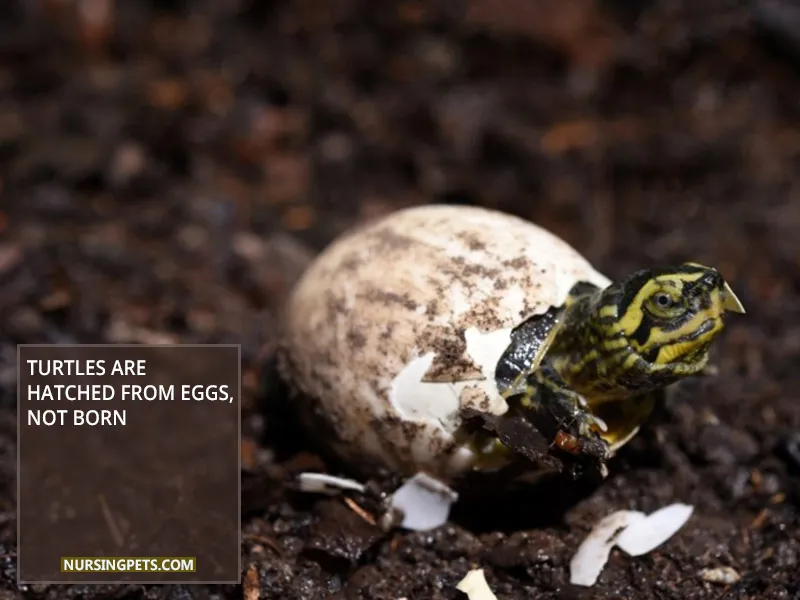
A turtle’s shell resembles a suit of armor, and it cannot be removed without causing harm to the animal. However, before modern turtles existed, according to some experts, there were ancient turtles that didn’t necessarily have shells as we know them today.
How Do Baby Turtles Get Their Shells?
Baby turtles develop their shells by blending rib bones and backbones. Their carapace and plastron join with the help of bony material known as the bridge. FYI, the carapace is the upper part, and the plastron is the lower portion of a turtle.
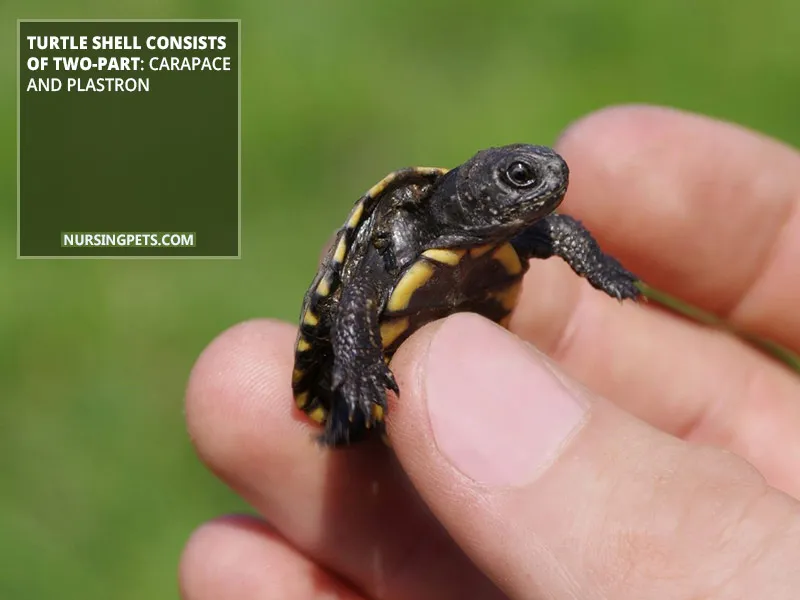
Once the shell forms, a protective layer of scutes made of keratin covers the shell, but some turtle species, such as leatherback and soft-shell turtles, lack this shell cover. So anyway, this is how baby turtles get their shells.
Now let’s discuss “when do turtles develop their shells?” Well, when turtles remain in the stage of embryonic development inside eggs, their shells begin to form around 20 to 30 days after their embryos are developed.
How Does A Turtle’s Shell Develop While It Is Still An Embryo?
The development of a turtle’s shell starts while it is still an embryo, and the first indication of this development is the appearance of a bulge along both sides of the embryo posterior to its limbs, which is called the carapacial ridge (CR).
And the CR is composed of two main layers of cells, the mesenchyme and the epithelium. Around the midpoint of embryo development, the embryonic turtle shell is easily recognizable, and usually, by the time of hatching, the shell is completely formed.

Consequently, you may know a turtle’s shell has two main parts: the carapace (top shell) and the plastron (bottom shell).
As the turtle grows, the muscle plate in its lower half folds inwards along a line that runs down the turtle’s body, eventually forming the plastron.
The CR and the turtle’s bones form simultaneously during development. Both the carapace and the plastron are extensions of the turtle’s skeleton, and together they are made of almost 60 bones that develop separately while the turtle is still an embryo.
How Do Turtle Shells Grow with Them?
You already know that turtles develop their shells by infusing ribs and backbones, and they cover their shells with scutes. FYI, these scutes play a significant role in extending turtles’ shell length.
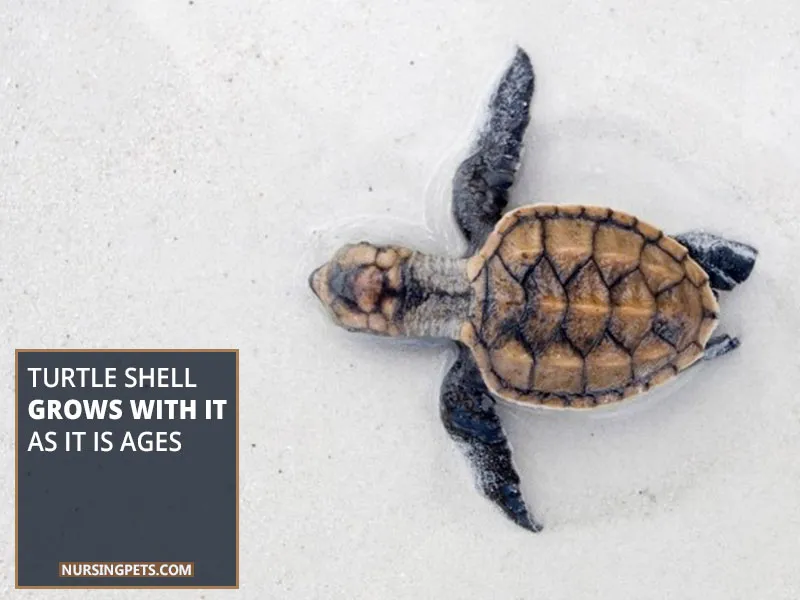
Their scutes have epithelium, a thin layer located between the scutes and the bony plates. With time, this epithelium yields a new and larger scute underneath the old one, expanding the turtle’s shell. So, this is how turtle’s shells grow with them.
Why Do Turtles Have Shells?
Turtles’ shells are one of their crucial body parts, without which no turtle can stay alive. And there are a couple of facts associated with why turtles have shells.
Let’s discover why turtles have shells or “how do baby turtles benefit from having a shell, or why is a turtle born with a shell?”
01. For Protection:
The first reason why turtles have shells is to protect themselves. Turtles’ robust shells shield them against predators and bruises and bumps.
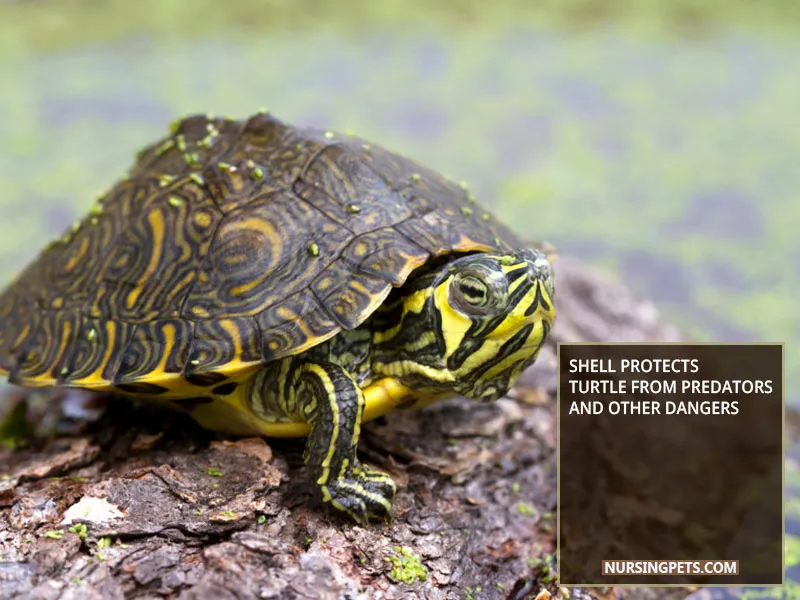
Also, their shells offer them a suitable place to hide their heads and limbs when they feel threatened.
02. For Excavating
Scientists have debated for years on the topic of whether turtles have their shells for excavating or not. But finally, they agree that these reptiles utilize their shells for burrowing.
According to their statements, turtles’ shells work as an anchor for their front arms, helping them with the digging jobs. This anchor point lets turtles powerfully pull their arms and burrow faster and deeper.
03. For The Smooth Movement
Turtles’ shells help them swim freely and swiftly underwater. In addition, many sea turtles feature slippery shells, making it easier for those reptiles to move around in the water.
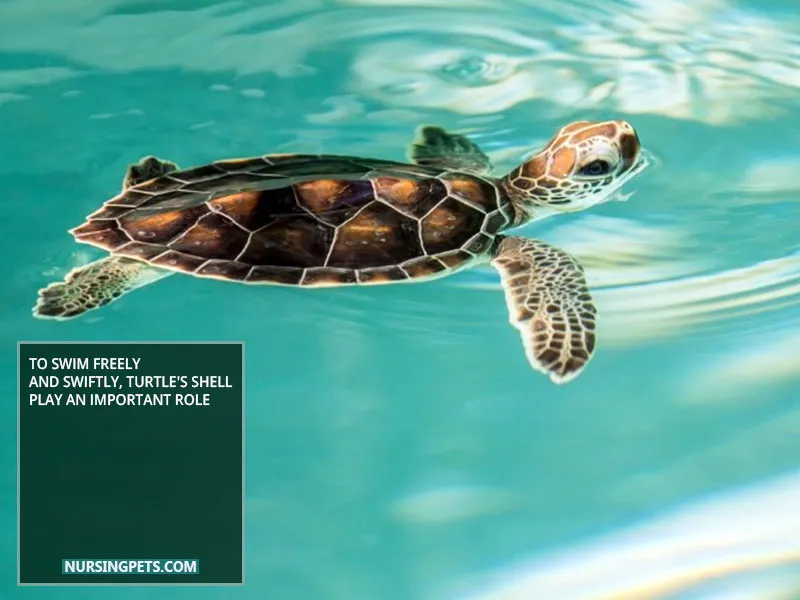
Turtles can reduce the friction between shells and the water while swimming with the help of their leathery shells.
Also, their shells allow them to make powerful strokes underwater and swim quickly. So this is another significant reason why turtles have shells.
04. For Buoyancy:
Turtles’ shells enable them to float underwater without making them pop to the water’s surface. Also, their shells prevent these reptiles from sinking all the time.
As you know, turtles’ shells consist of keratin and bones, allowing them to move around in the water comfortably and float effortlessly.
05. To Absorb Heat:
You may know that any materials colored black absorb heat more effectively than other light colors that reflect the heat. Fortunately, most turtles boast black-colored shells.
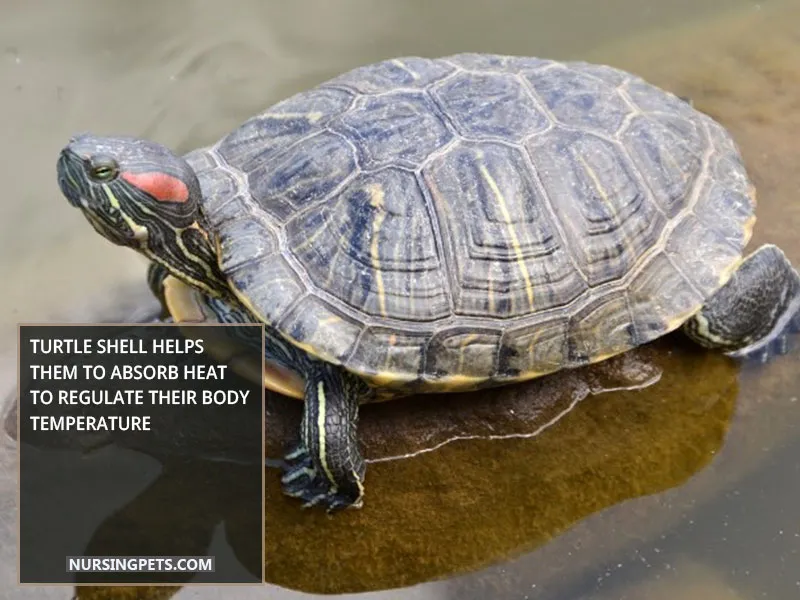
As a result, turtles can absorb heat more efficiently than other animals. As these reptiles are cold-blooded animals, heat absorption is quintessential for survival, and without shells, they can’t perform this job.
06. To Fight Infections:
Turtles’ shells protect their vital organs, including the digestive tract and nervous and respiratory systems. If turtles don’t have shells, these organs will remain exposed and get infested by fungi and bacteria.
Fortunately, these reptiles feature shells that shield against disease-causing critters and let turtles live healthily.
However, these are all the causes why turtles have shells or how a baby turtle benefits from featuring a sturdy shell.
Can A Baby Turtle Feel You Pet Their Shell?
Indeed, a baby turtle can feel when you pat its shell. This is because a turtle’s shell contains nerves leading back to its nervous system. Consequently, turtles can feel it whenever someone or something touches their shells.
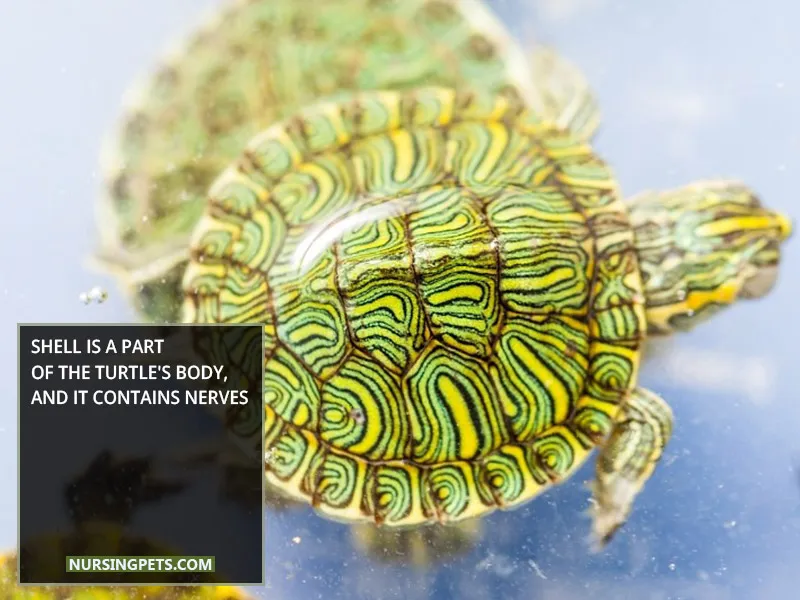
A related article to this topic may interest you: Turtles Have Nerves in Their Shells?
These reptiles can feel it when their shells become scratched, stroked, and tapped. Hence, it indicates that turtles’ shells are sensitive enough to feel the sensation.
Can You Remove A Baby Turtle From Its Shell?
If you want to keep the baby turtle alive, you shouldn’t opt for performing this barbaric job. A turtle’s shell includes nerve endings and bones required to live.
A related article to this topic may interest you: Turtles Attached To Their Shells?
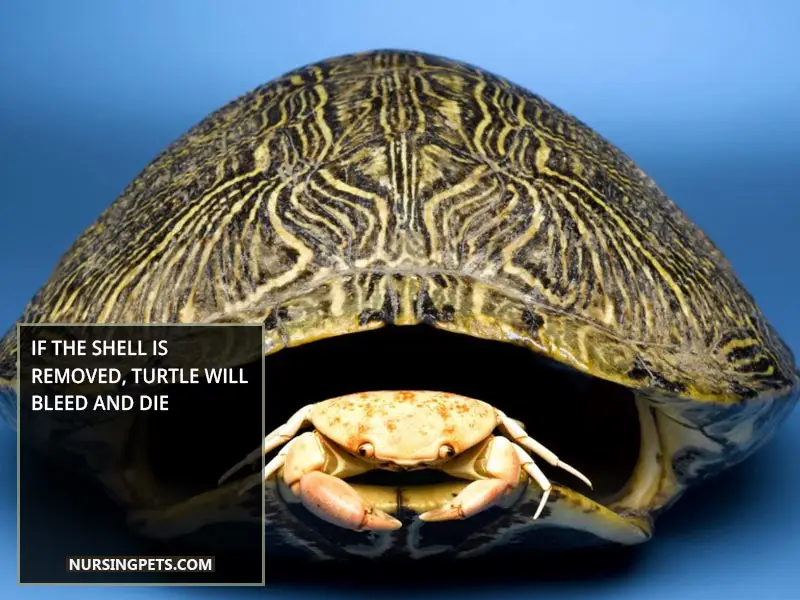
That said, if you remove a baby turtle from its shell, its nervous system stops functioning and will start to bleed, resulting in a quick death.
However, if you are searching for the answer to the question “what happens if a turtle loses its shell?” we hope you have it now.
How Long Does It Take For A Baby Turtle To Come Out Of Its Shell?
Depending on the species, a baby turtle requires around 45 to 70 days to come out of its eggshell. However, the incubation time varies with species, temperature, clutch size, and humidity.
So, you can’t say for sure when a baby turtle will come out from its eggshell.
Will Turtle Shell Grow Back?
Turtles can grow back their damaged shells to a certain point. If their shells get a hole or crack, exposing the internal organs, turtles can regrow that broken part.
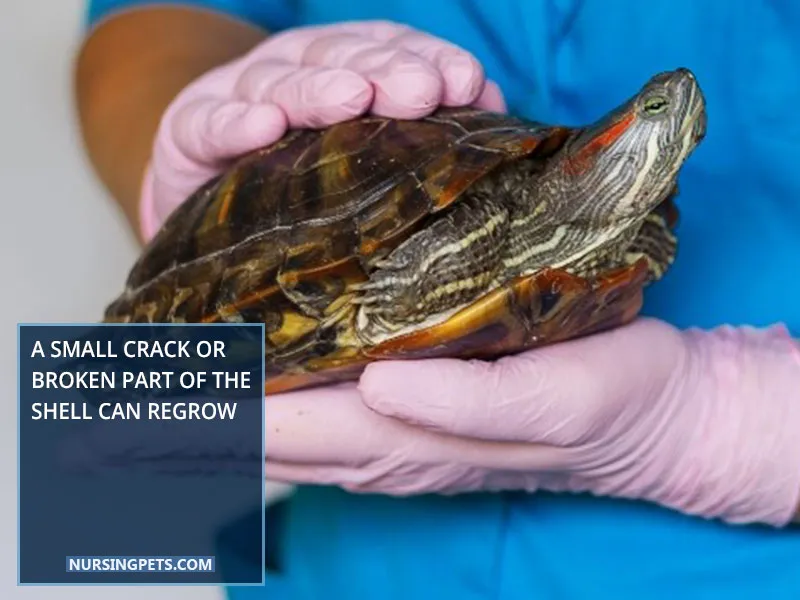
Also, turtles can regrow a chunk of the shell, broken from the carapace or plastron’s edge. However, these reptiles can’t reconstruct the entire shell. If a turtle loses its full shell, it will be infected and die immediately.
A related article to this topic may interest you: Turtles Have Blood In Their Shell?
That said, if you are looking for the answer to the question, “can a turtle regrow its shell?” we hope you now comprehend this.
What Happens If Turtle Shell Breaks?
Although a broken shell won’t give your pet baby turtle a quick death, it’s a severe medical condition. A turtle can get infected with a cracked shell and suffer serious health problems if left untreated.
But fortunately, it will survive, so if you wonder, “can a turtle with a broken shell survive?” or, “can turtles live without their shell?” you now know the answer. But how painful a shell crack can be, depends on the turtle’s age and the extent of the damage.
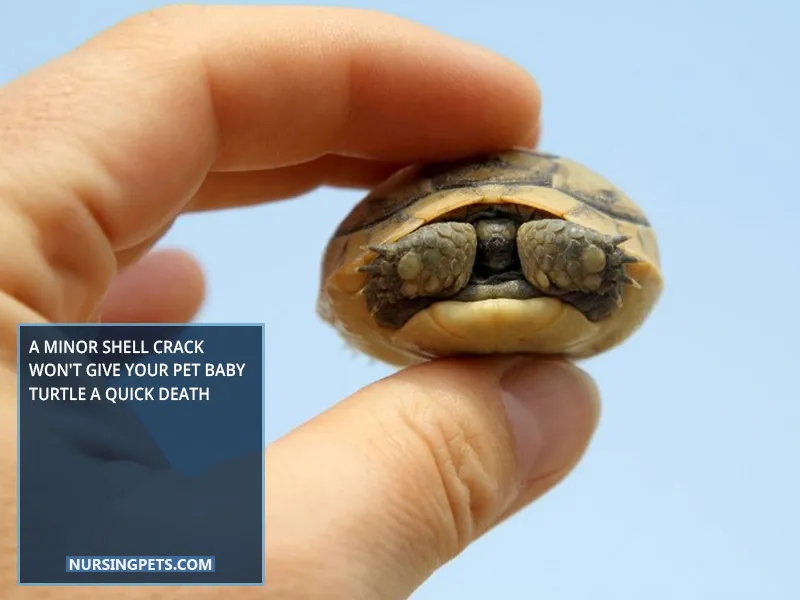
If it’s an adult turtle, it will feel less pain, similar to the feeling we get when our fingernails get cracked. But, on the contrary, if a baby turtle has its shell broken, it will be excruciating for it.
Now let’s discuss how long a turtle shell will take to heal. In essence, it entirely depends on the fracture. Usually, small cracks go away within months, and big ones take one to two years.
But massive shell cracks don’t heal on their own. So a turtle with a giant shell crack needs proper treatment.
What Happens If You Touch A Turtle Shell?
Various things can occur if you touch a turtle shell. First of all, it will cause turtles to experience stress. Secondly, turtles can feel threatened and attack you if you touch the shell of an alligator snapping turtle or some aggressive ones.
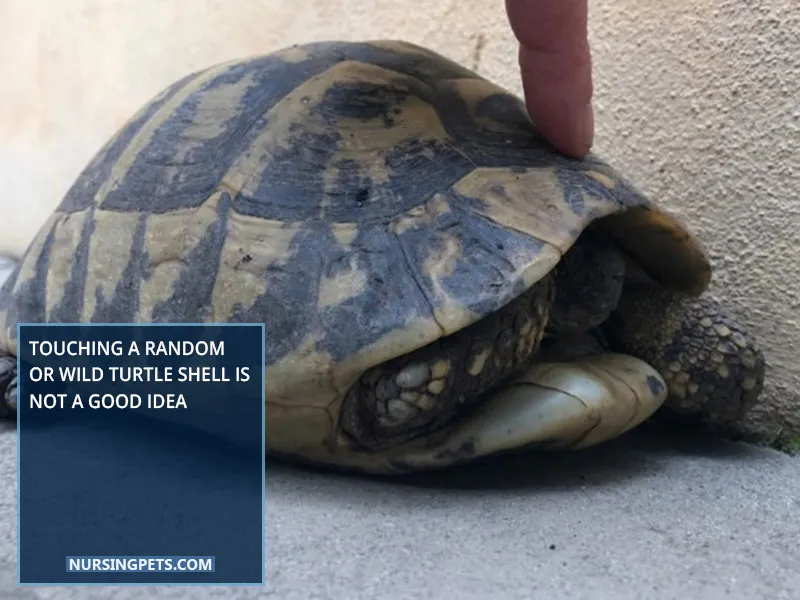
Lastly, touching their shells can transfer your hand’s bacteria to turtles. Hence, you shouldn’t touch a turtle, especially a sea turtle, as it can be illegal to touch or harass this turtle species unless you pet one and take good care of it.
What Happens To A Turtle Shell When A Turtle Dies?
When a turtle dies, naturally, it decomposes, but its shell remains intact for several years. This is because turtles’ shells are anatomically and chemically different from the rest of their body.
Hence, the shell doesn’t decay, while the flesh does right after the turtle dies. FYI, turtles’ shells can remain fresh for about 50 years. Therefore, if you want to preserve a shell as a remnant of your pet turtle, you can easily accomplish this job.
Can You Tell How Old A Turtle Is By Its Shell?
Yes, you can tell how old a turtle is by its shell, and it’s pretty simple to figure out. Here’s how you can determine the turtle’s age by its shell. First, you need to count the rings a turtle features on its shell.
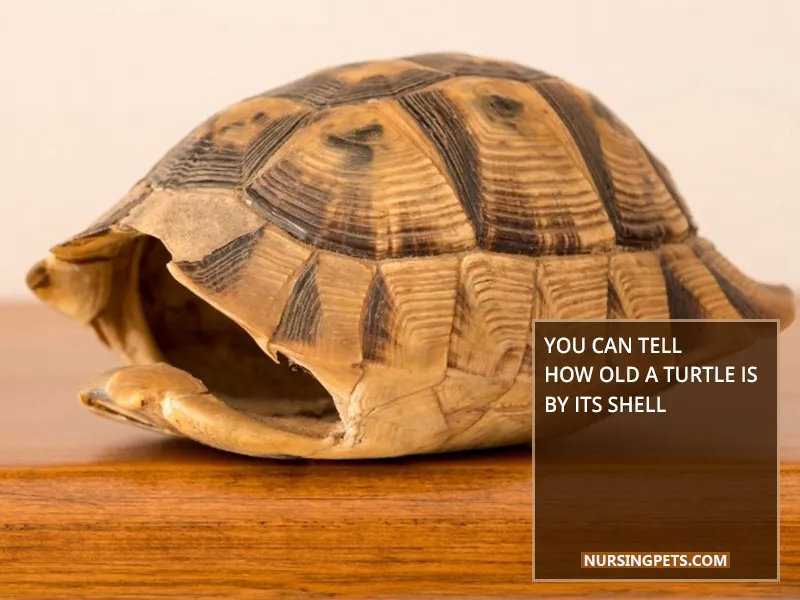
We recommend counting rings within the scutes. FYI, the wider ring represents a good-eating period, usually the warm season. On the other hand, the narrower ring signifies a period of scarcity.
In short, two rings represent a year; hence if you count all the rings and divide them by two, you will have a general estimate of the turtle’s age. For example, if your turtle features 16 rings, then your turtle is eight years old.
So, that’s how you can assume the turtle’s age by looking at its shell.
Frequently Asked Questions
01. Can A Turtle Be Born Without A Shell?
No, turtles can’t be born without a shell since a shell is quintessential for these reptiles to thrive. FYI, a turtle shell features bones and nerve endings that every turtle needs to survive.
02. What Happens If A Turtle Is Born Without A Shell?
Although turtles aren’t born or hatched without their shells, if they do, they won’t survive for a couple of minutes. It’s because turtles’ shells protect their vital organs; without shells, these organs will easily get infected and damaged, causing turtles to die.
03. Do Turtles Get New Shells As They Grow?
Turtles don’t get new shells as they grow but develop their shells with time. Likewise, turtles can’t change their shells, and their shells form with them.
04. Do Turtles Shed Their Shells Every Year?
Turtles don’t shed their shells, but they shed scutes with the help of basking in the sun. Once turtles grow new scutes over old ones, they dry off the old scutes, and many people call this act shell-shedding.
05. Can Turtles Get Out Of Their Shells? Or Can Turtles Change Their Shells?
Turtles can’t get out of their shells as their shells remain attached to their body parts. FYI, turtle’s shells are a part of their skeleton, and these reptiles can’t readily remove their shells.
Wrapping Up:
Baby turtles are born or hatched with shells, which work as armor and protect them against every potential danger. Without these sturdy structures, no baby turtle can thrive for hours in the wild. So yeah, these shells are that much essential for all turtle species.
However, we hope now you know whether baby turtles are born with shells or not. That’s all for this content; we will grab you with the next one.
Article Sources:
- Embryo.Asu.Edu/Pages/Mechanistic-Realization-Turtle-Shell
- Earthsky.Org/Earth/When-Did-The-Turtle-Get-Its-Shell/
- Animals.Howstuffworks.Com/Reptiles/Turtle-Shell1.Htm
- Seaworld.Org/Animals/All-About/Sea-Turtles/Care-Of-Young/
- Manitowoc.Org/868/Box-Turtles
- Animals.Mom.Com/How-To-Preserve-Turtle-Shells-4169349.Html
- Scientificamerican.Com/Article/How-Are-Seashells-Created/
- Conserveturtles.Org/Information-Sea-Turtles-General-Behavior/
Image Credit: Canva.com/photos

